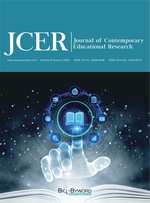Relationship Between Language and Thought: Linguistic Determinism, Independence, or Interaction?
Abstract
The relationship between language and thought has long been a topic of great interest in the field of linguistics, especially in psycholinguistics. Herder, Humboldt, Trendelenbury, Sapir, Whorf, Gui Shichun, Lian Shuneng, and Bao Huinan are some of the well-known scholars who have conducted research on the relationship between language and thought. With regard to the relationship between language and thought, there are three main viewpoints. The first group of scholars, represented by Sapir and Whorf, supports linguistic determinism. Some scholars believe that language and thought are mutually independent. However, others believe that language and thought are inseparable. Beginning from Sapir-Whorf hypothesis and their theory of linguistic determinism and linguistic relativity, this article agrees with the influence of language over thought but refutes the extreme viewpoint of linguistic determinism from several points, proving the independence and mutual influence of language and thought. This article finally concludes that the preferred relationship between language and thought should be that they are independent but interactive.
References
Carroll JB, 1956, Language, Thought and Reality, Wiley, New York, 135, 213-214.
Sapir E, 1929, The Status of Linguistics as a Science, University of Chicago, USA.
Palmer F, 1981, Semantics, Cambridge University Press, Cambridge.
Carroll JB, Casagrande JB, 1958, The Function of Language Classification in Behavior, in Readings in Social Psychology, Holt, New York.
Gui SC, 2000, Psycholinguistics (New Edition), Shanghai Foreign Language Education Press, Shanghai.
Dai ZM, 1996, An Introduction to Cultural Linguistics, Language and Culture Press, Beijing.
Carruthers P, 1998, Language, Thinking in Language? Evolution and A Modularist Possibility, in Language and Thought: Interdisciplinary Issues, Cambridge University Press, Cambridge.
Chomsky N, 1972, Language and Mind, Harcourt Brace Jovanovich, New York.
Berlin B, Kay B, 1969, Basic Color Terms: Their University and Evolution, University of California Press, Berkeley.
Carroll DW, 1999, Psychology of Language, Brooks/Cole Publishing Company, USA.
Sapir E, 2002, Language: An Introduction to the Study of Speech, Beijing Foreign Language Teaching and Research Press, Beijing.
Vygotsky LS, 1962, Thought and Language, The M.I.T Press and John Wiley& Sons, Inc., New York and London.
Whorlf BL, 1956, Language, Thought and Reality, The Technology Press of Massachusettes, Massachusettes.
Bao HN, 2001, Cultural Context and Language Translation, China Translation Corporation, China.
Cui XL, 2001, Language Understanding and Cognition, Beijing Language and Culture University Press, Beijing.
Hu ZL, Zhu YS, Zhang DL, et al., 2005, An Introduction to Systemic-Functional Linguistics, Peking University Press, Beijing.

